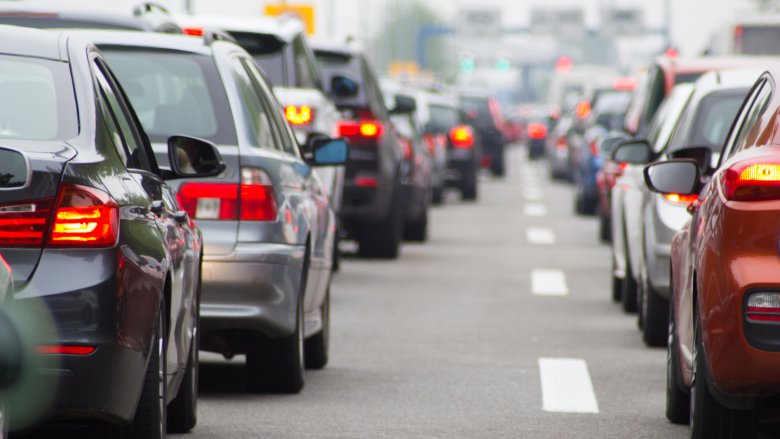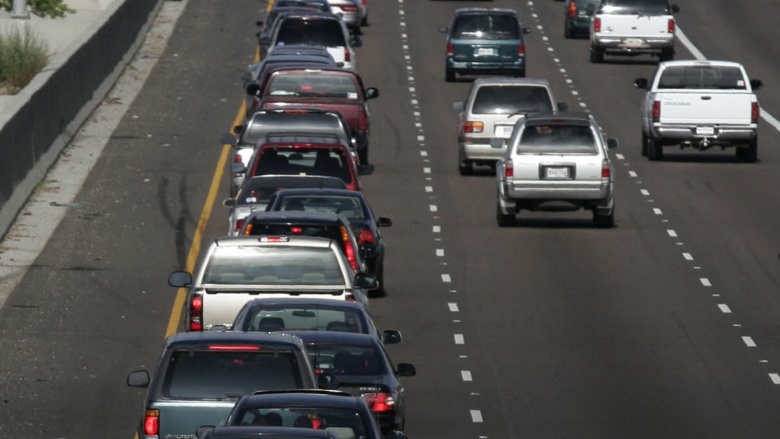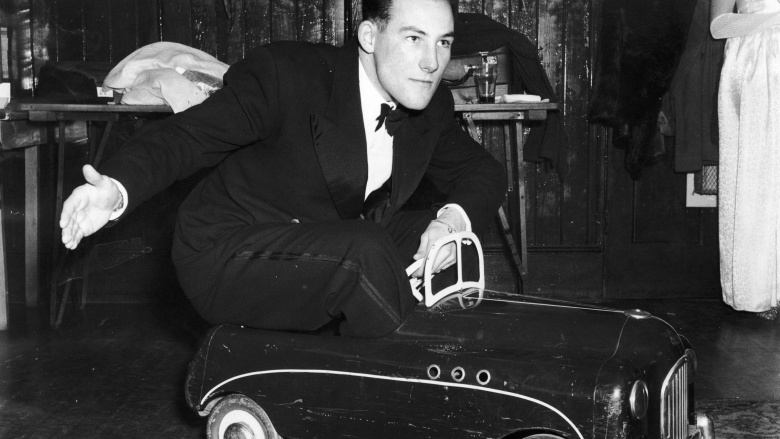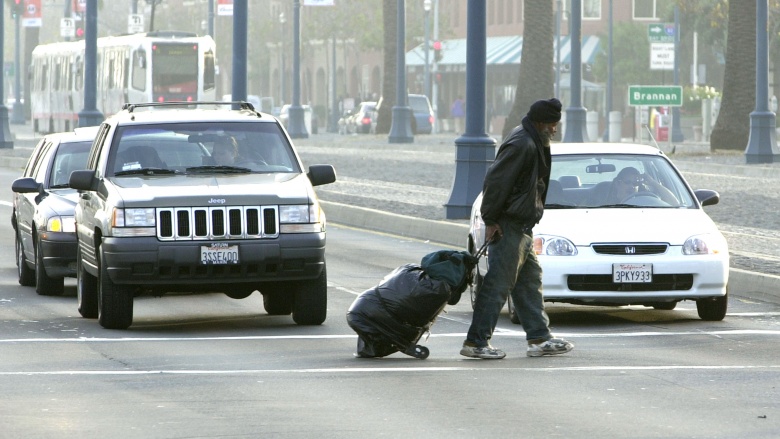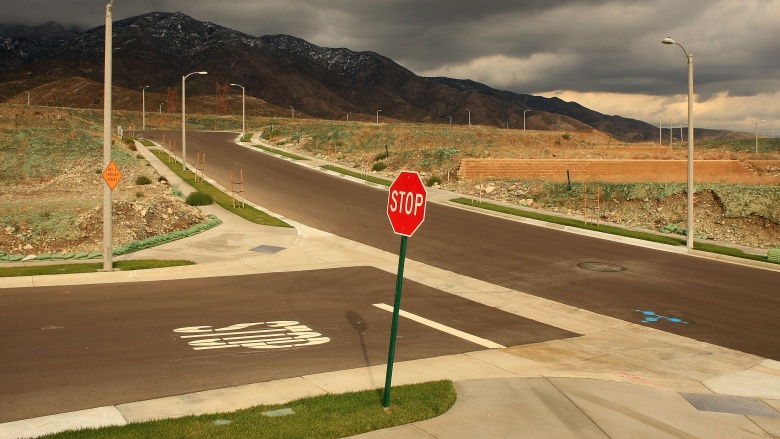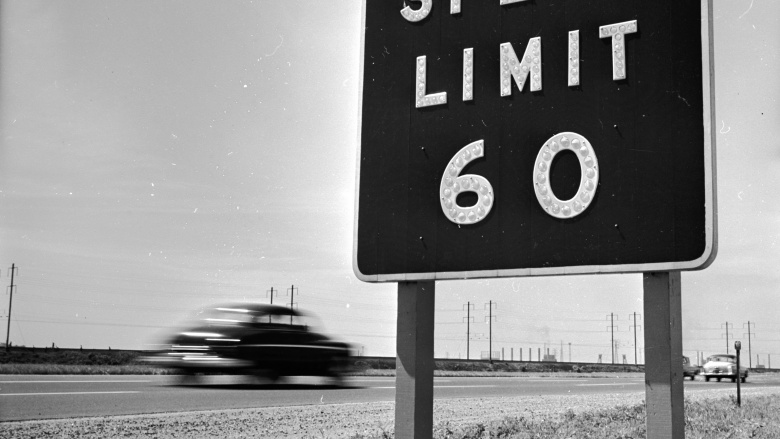Universal Traffic Laws That Nobody Obeys
Traffic laws exist to keep us safe—without them, and with over 250 million vehicles swarming America's roads, driving would quickly cease to be a safe and convenient perk of modern American life. While the number of laws that control our driving are many, for the most part, we observe them without even noticing ... for the most part. Because for some reason, when it comes to a few specific laws, drivers have adopted a much broader interpretation of the phrase "the letter and spirit of the law," and pretty much do what they like. Here are a few driving laws that almost nobody obeys.
The passing lane is for passing
Most states require vehicles to keep right on a multi-lane highway, unless actively passing another vehicle. However, while that seems pretty straightforward, for the most part, nobody does that. We sometimes drive in the right lane, but with all the traffic joining and leaving, and all the slow moving trucks, it can be a total hassle. Which might be why, even though it is officially described as a "passing lane," most people prefer to think of the left lane as the "fast lane." That way, so long as you are going faster than whatever the traffic actually (or even just potentially) is in the right lane, then you're "not doing anything wrong." And when you're cruising at the speed limit, and your rear-view mirror is suddenly filled with a BMW trying to get past, you can remain where you are safe in the knowledge that you are in the right, and he can go to Hell. But if you're not on the right when someone is trying to get past, then you're not in the right—even when that someone is driving a BMW.
Indicating a turn
With so many cars on the road, it can be hard to keep track of everything that's going on around you. To make things a little easier, all the vehicles we drive are equipped with lights that help give other road users an idea of what we are about to do—be that slowing down, reversing, or changing direction. And while the lights for slowing down and reversing turn on automatically at the right time, the indicator lights require some driver input to work. Oh, not much effort—almost none, to be honest. But even though we barely have to lift a finger to operate the indicators, according to a report by the Society of Automotive Engineers (via Nasdaq), nearly half of us don't bother to indicate when changing lanes.
What's more worrying, though, are the excuses. In a 2006 survey by Response Insurance, of the 57 percent of drivers who admitted failing to indicate (rising to 71 percent in the 18-24 age group), 23 percent said they were simply too lazy to lift a finger, which actually isn't an excuse so much as it is brutally, depressingly honest. In addition, in a mind-blowing feat of acrobatic logic, 42 percent said they didn't have time. They had the time to adjust the radio, shift into gear, adjust the air, or even call their friend and moan about last night, but they can't find the time to lift a finger a few seconds before they turn the steering wheel. That's scary.
Yield to pedestrians
Most states require you to yield to a pedestrian crossing the road, and although there are variations as to when the rule kicks in, they all agree that at some point, when a pedestrian is crossing the road, you must yield. If the road is narrow and the pedestrian fast, yielding is a natural reaction, because they're already in your way. However, when the road is wide and the pedestrian slow, it's so easy to get through the crossing without bothering the shoe surfer at all, and so that's often what we do.
Even as a pedestrian, this law can be frustrating, for when a driver does yield, you suddenly feel obliged to speed up and cross as fast as possible, where if the driver had just ignored you, you could cross at your own pace. However, one study, described in the Chicago Tribune, found that, with the exception of specially marked crosswalks, drivers stopped as little as 18 percent of the time when a pedestrian was trying to cross the road. The rule exists to protect pedestrians, as it should and although it can be frustrating, maybe steering closer to the letter of the law, and away from the pedestrians, makes a bit more sense in this case.
Stop signs
Stop signs are pretty clear about their purpose. It's written right there on the sign, in big letters: S-T-O-P. But somehow, there has evolved a new interpretation of what's required at these important points on the road. Instead of actually stopping, it is common to perform what is sometimes described as a "California stop" or a "Rhode Island roll," but is most often simply called the "rolling stop." Any time you pass a stop sign—even if you are barely moving before you pull away again—if your wheels don't actually stop moving, you are breaking the law. By forcing you to stop, it is intended that you will take extra care before pulling away. But in situations where visibility is good, and often even when it isn't, a rolling stop is just too convenient an option to resist.
A 2010 study in Minnesota concluded that, out of 2,400 observations of vehicles at stop-controlled intersections, 52 percent performed a rolling stop, and 13 percent failed to stop at all. When it comes to traffic laws, there are occasionally arguments over the difference between the letter, and the spirit of the law. But when the letter of the law is so clearly displayed right on the sign, it's very hard to make a case that the spirit of the law intends you do anything other than STOP.
Speed limits
Speed limits, like stop signs, are hard to argue with. If the sign says 65 miles per hour, and you're doing 66 miles per hour, then you are technically breaking the law. But that doesn't stop most of us doing it literally every time we get in the car. Sometimes it is an honest mistake—going downhill, or over-exuberant acceleration—but most of the time, people just don't seem to care that much. Speeding is so prevalent that, oftentimes, any car actually observing the speed limit is the slowest car on the road, and that vehicular peer pressure may be adding to the problem. According to the National Highway Traffic Safety Administration, in 2014 the US issued an average of 112,000 speeding tickets every day, and fines paid that year totaled over $6.2 billion, money which often finds its way into many public services. So in a way—excepting the idiots going 60 past the local high school when they're not saving 30 seconds on their trip to the supermarket—all those people getting tickets for going 5 miles over the limit are actually providing the states with valuable revenue. Not all heroes wear capes, or obey the law.
